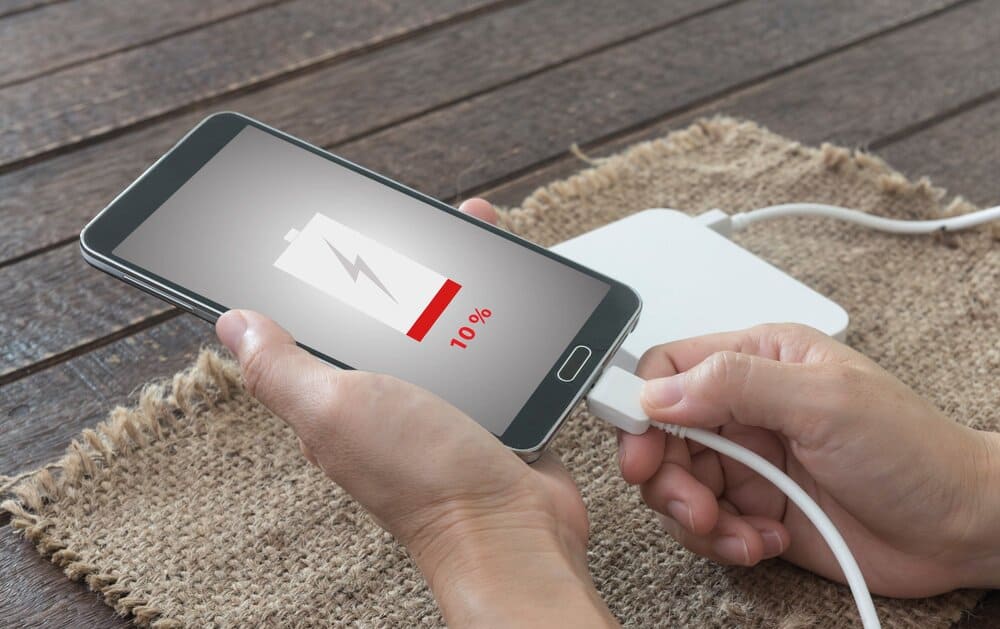Keeping your phone charged while enjoying the great outdoors has become an essential aspect of camping. Whether you’re car camping or venturing deep into the wilderness, having a reliable power source for your devices can be crucial for safety, navigation, and capturing memories. This comprehensive guide will explore various innovative solutions for off-grid power, ensuring you stay connected even in the most remote locations.
Why Keeping Your Phone Charged is Crucial
While the primary purpose of camping is to disconnect from the digital world and immerse yourself in nature, having a charged phone can be vital for several reasons. First and foremost, it serves as a lifeline for emergency communication. In case of unexpected situations, having the ability to call for help can be life-saving. Additionally, many campers rely on their phones to navigate GPS, access trail maps, and stay updated on weather conditions. Lastly, smartphones have become our primary tools for capturing and sharing memories of outdoor adventures.
Portable Power Solutions
Solar Charging Options
Harnessing the sun’s power is one of the most eco-friendly ways to keep your devices charged while camping. Portable solar panels have come a long way in recent years, becoming more efficient and compact. These panels can be attached to your backpack during hikes or set up at your campsite to generate power throughout the day. Some innovative products even integrate solar panels directly into backpacks or tents, allowing for passive charging while you explore or rest.
Battery Power Banks
High-capacity power banks are a camper’s best friend when it comes to keeping devices charged. When choosing a power bank for camping, consider capacity, weight, and the number of devices you need to charge. Look for models with fast-charging capabilities and multiple USB ports to charge several devices simultaneously. Some advanced power banks even have built-in solar panels for extended off-grid use.
Fuel-Based Chargers
Fuel-based chargers can be an excellent backup option for longer trips or when solar power isn’t reliable. CampStove wood burners, for example, allow you to charge your devices using the heat generated from burning twigs and small branches. Alternatively, if you’re planning an extended stay at a campsite, considering what size generator for camping might be appropriate for your power needs.
Harnessing Natural Energy Sources
Hydroelectric Chargers
Portable hydroelectric chargers offer a unique and sustainable charging solution for campers who frequently set up near rivers or streams. These devices use water flow to generate electricity, providing a constant power source as long as there’s running water nearby.
Wind-Powered Chargers
Compact wind turbines can be an effective way to generate power in windy areas or exposed campsites. While not as common as solar chargers, wind-powered options are becoming more available for outdoor enthusiasts looking for alternative energy sources.
Vehicle-Based Charging Solutions
It can serve as a reliable power source if you’re camping near your vehicle. Invest in a good car charger or consider a dual-battery system for campervans. Jump starter packs with built-in USB ports can also provide emergency power for your devices while doubling as a safety tool for your vehicle.
Campsite Power Options
Many developed campgrounds offer electrical hook-ups, which can be a convenient way to charge your devices. Some campsites even provide communal charging stations. However, it’s essential to have alternative charging methods for when these amenities aren’t available or if you prefer more remote camping experiences.
Innovative Charging Technologies
The world of portable charging is constantly evolving. Kinetic energy chargers, which generate power from your movement, are becoming more efficient. Thermoelectric generators that convert heat differentials into electricity are also emerging as potential camping power solutions. For those interested in the latest camping gear, wireless charging pads designed for outdoor use are starting to hit the market.
Power Management Strategies
Efficient power management can significantly extend your device’s battery life. Utilize your phone’s power-saving modes, turn on airplane mode when not in use, and be strategic about when and how you use power-hungry apps. Consider scheduling charging times to coincide with periods of inactivity or when you can access reliable power sources.
Eco-Friendly Charging Practices
As outdoor enthusiasts, it’s crucial to minimize our environmental impact. Opt for sustainable power sources when possible and adhere to Leave No Trace principles when using and disposing of electronic devices and charging equipment. Being mindful of our tech use can help preserve the natural beauty we seek to enjoy.
Charging Solutions for Different Camping Styles
The best charging solution often depends on your camping style. Backpackers and ultralight campers prioritize lightweight solar panels or compact power banks. Those engaging in car camping or glamping might opt for more robust power stations or even consider what kind of generator for camping would suit their needs. Winter campers should know that cold temperatures can significantly impact battery performance and plan accordingly.
DIY Charging Projects
Building your own charging solutions can be rewarding for the tech-savvy camper. Creating a basic solar charger or rigging up a bicycle dynamo charging system are fun ways to personalize your off-grid power setup.
Future of Off-Grid Charging
The future of off-grid charging looks bright, with ongoing advancements in portable power technology. From more efficient solar cells to revolutionary battery technologies, staying powered in the wilderness is becoming easier and more sustainable.
Safety Considerations
Protecting electronic devices from the elements is crucial when using them outdoors. Use waterproof cases, avoid exposing devices to extreme temperatures, and store charging equipment properly to prevent damage.

Conclusion
It’s important to balance staying connected and appreciating the natural world around us in our outdoor adventures. By planning for your power needs and choosing the right charging solutions, you can ensure that your devices are ready when needed, without detracting from your camping experience.
As you plan your next camping trip, consider exploring some of the accessible US national parks that offer both natural beauty and the amenities you might need to stay comfortably connected.
FAQs
How can I ensure my phone stays charged while enjoying the outdoors?
To keep your phone charged during your camping trips, consider using portable power banks with multiple ports, which can be pre-charged and used multiple times. Alternatively, solar phone chargers are an eco-friendly option that harnesses sunlight to recharge.
Are there campsites with options to charge electronic devices?
Yes, many campsites now offer electricity hookups. It’s recommended to research beforehand to find campsites with these amenities, although they may be more crowded and offer a different kind of outdoor experience.
What are the benefits of using a solar charger while camping?
Solar chargers provide a sustainable charging solution by converting sunlight into electrical energy, allowing for continuous recharging during daylight hours. This method is particularly useful for extended camping trips where traditional power sources are unavailable.
Can I use my vehicle to charge my phone while camping?
Certainly, if your campsite is near your vehicle, you can use it to charge your phone. However, be mindful not to drain your car’s battery, especially if you’re using it for other power-intensive accessories.
What should I consider when using a gas generator to charge my phone?
While gas generators are a reliable power source, they can be noisy and have an environmental impact. If you choose to use one, be considerate of other campers and the natural surroundings.
Is it possible to find alternative power sources while camping?
Yes, you can sometimes scavenge for power sources at campsites with electrical hook-ups or nearby local establishments. Some campers may also share their power supply for a fee.
How can I prolong my phone’s battery life while camping?
To extend your phone’s battery life, lower the screen brightness, enable airplane mode when not in use, and keep your phone warm, especially in colder environments.
What are some tips for reducing my phone’s screen brightness effectively?
Adjust the brightness level to the lowest comfortable setting, set a shorter screen timeout, use dark mode, close background apps, and turn off non-essential notifications.
Why should I keep my phone warm while camping, and how can I do it?
Keeping your phone warm helps prevent battery drain in cold conditions. Store your phone in an insulated case, keep it close to your body, or use hand warmers to maintain a warm temperature.






Leave a Reply